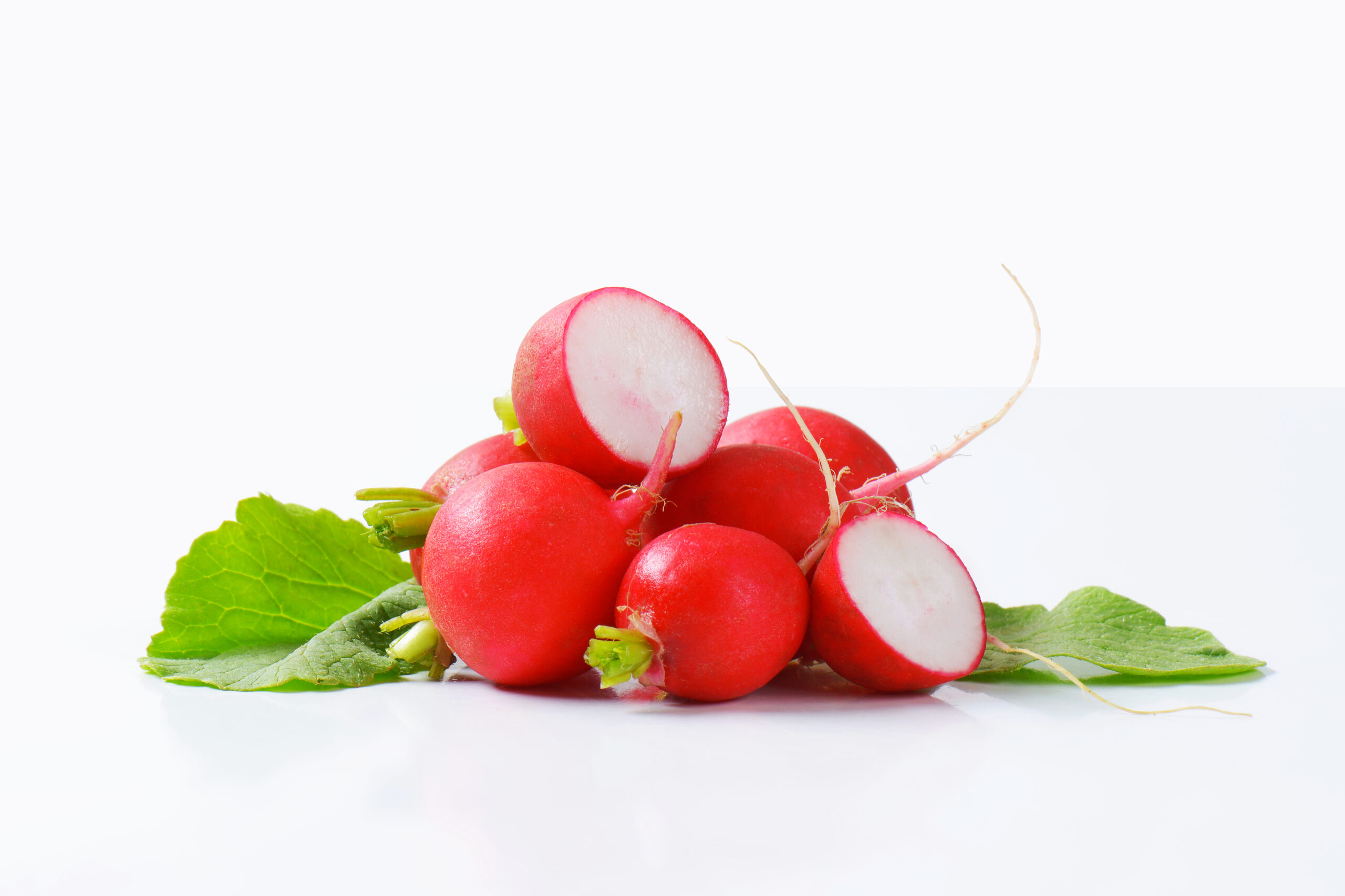Do Babies like Radishes?
Many don’t, but mine did. There may be some genetic luck at play here, but I am fairly certain that my baby’s preferences for healthy foods came from more than that. I put in some serious effort during pregnancy and breastfeeding to help my baby learn to like radishes. Here’s my story and tips for how you can have babies who like radishes, too.

Preferences for Healthy Foods Begin in the Womb
When I learned I was pregnant with my first son, I was conducting research at a taste and smell research institute. I had spent the previous 3 years learning about how our senses of taste and smell develop during early childhood and how early life influences can shape our food preferences. I was amazed to discover that a vast amount of learning about food occurs long before a baby’s first bite of solids.
A vast amount of learning about food occurs long before a baby’s first bite of solids.
We know that the senses of taste and smell begin to develop early in gestation and are fully functioning by the third trimester. The amniotic fluid contains taste and odor molecules, many of which come from what the mom eats. So, if a pregnant woman has a garlicky pasta dish for dinner, 1-2 hours later her little fetus will be bathed in garlicky amniotic fluid. That fetus’ senses of taste and smell detect this change and so begins the fetus’ education about the foods of her culture. This garlicky amniotic fluid communicates to the fetus, “Hey, your mom eats garlic and you probably will, too. You should probably learn to like this.”
With repeated exposure to the flavors of the mother’s diet, the fetus develops a preference for the flavors experienced. This process is nature’s way of ensuring babies are born ready to accept the foods of their cultures and the foods available outside of the womb. In fact, research shows us that, at weaning, babies show preferences for the flavors of the foods their moms ate during pregnancy.

Preferences for Healthy Foods Continue to be Shaped during Breastfeeding
This learning continues during breastfeeding through a similar process. The flavor of breast milk is constantly changing in response to what the mom ingests. Nursing babies notice when new flavors appear in breast milk. They stay on the breast longer and suck faster to explore and experience these new flavors. Repeated experiences with the flavors of the mother’s diet continue to shape the baby’s food preferences. At weaning, babies also show preferences for the flavors they experience in the breast milk.
This process represents a form of “biological parenting” where continuity in the flavors of amniotic fluid and breast milk helps the baby transition from womb to world. Because these flavors align with the foods of the family, this experience also helps the baby transition from breast to table by ensuring the baby will be receptive to and accepting of the diet of the family and culture at weaning.

My Cute Little Experiment
With this knowledge in hand, I was excited to shape my own baby’s preferences by repeatedly exposing him to a flavor during pregnancy and breastfeeding. My husband and I thought hard about the perfect food for our little experiment. We wanted to choose a food that babies wouldn’t naturally like. We also wanted to choose a food that I didn’t already like and eat a lot of. Finally, we wanted to choose a food with a strong, distinctive flavor. We finally settled on radishes.
I was a model study participant. Every day, I took my daily dose of prenatal vitamins, then I took my daily dose of radishes. After my son was born, I breastfed him and continued to take my vitamins and radishes. My son turned 6 months and we began introducing solid foods. I was excited to see whether my efforts paid off.
One evening, I steamed a few radishes and pureed them to the consistency of applesauce. I didn’t add anything except a tiny bit of filtered water to help with the blending. We sat our son in his high chair, put his bib on, set up the video camera, and anxiously offered the first spoonful of radishes.
HE LOVED IT. We were so pleased to see that he was so pleased to eat the radish puree. With his first bite, his face was calm and his little eyebrows raised in a sort of “Hmm, I know this flavor” expression. Then, he leaned in, smiled, and happily accepted his second bite. He enthusiastically ate the whole bowl of pureed radishes. It was amazing to watch.
With his first bite, his little eyebrows raised in a sort of “Hmm, I know this flavor” expression.
So, how can you have babies who like radishes, too?
The first step is to eat radishes yourself during pregnancy and breastfeeding (or, even better, eat a wide variety of fruits and vegetables!). Do your best to provide your babies with a robust education about the healthy foods of your family and culture prior to their first bite of solid foods. This will help your babies be more accepting of these foods during weaning, which is an important foundation for promoting healthy dietary patterns later in life.
Want to learn more about fostering children’s preferences for veggies? Read more here!
Enjoying Developing Appetites? Subscribe here to have new posts delivered straight to your email!

